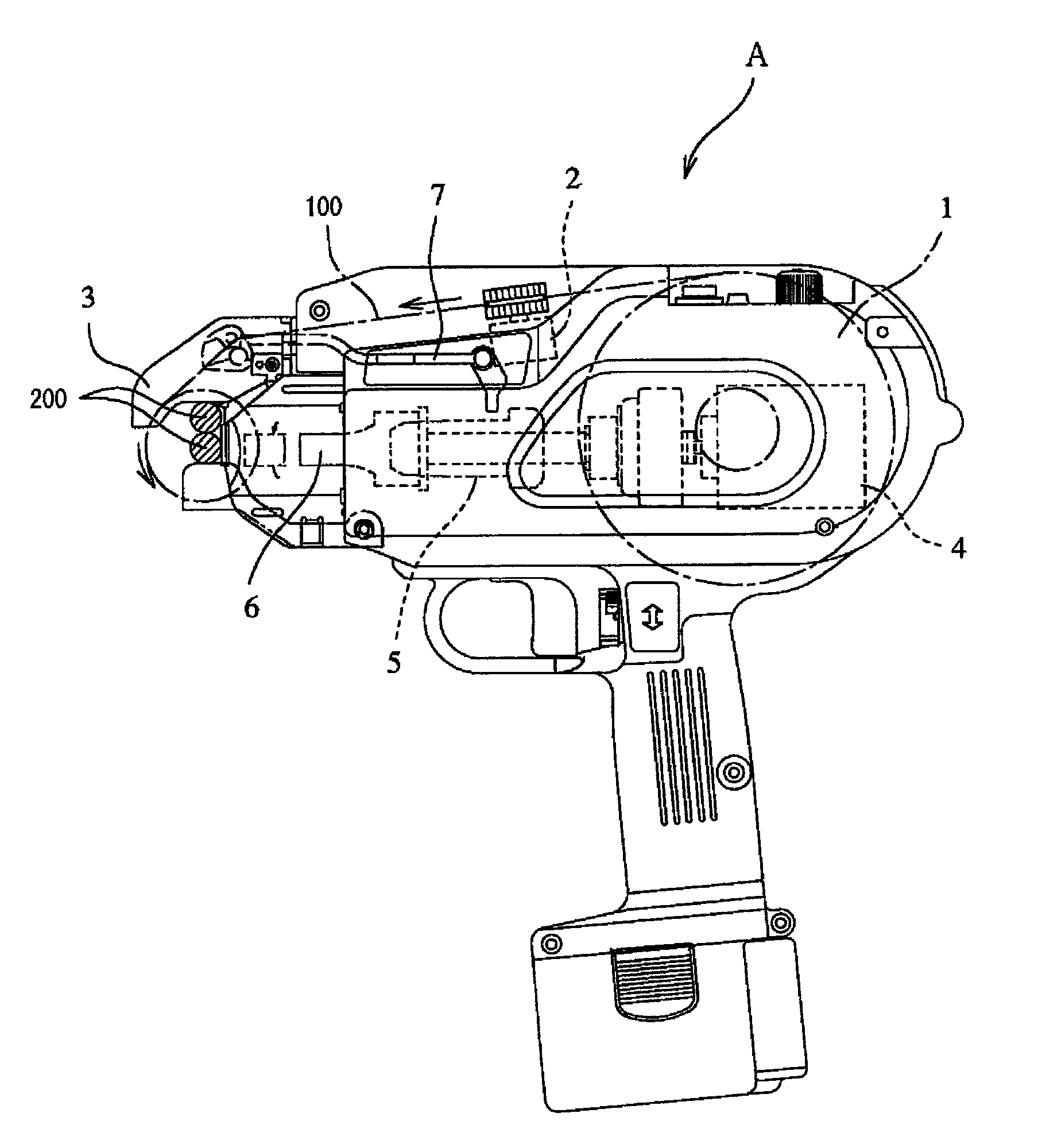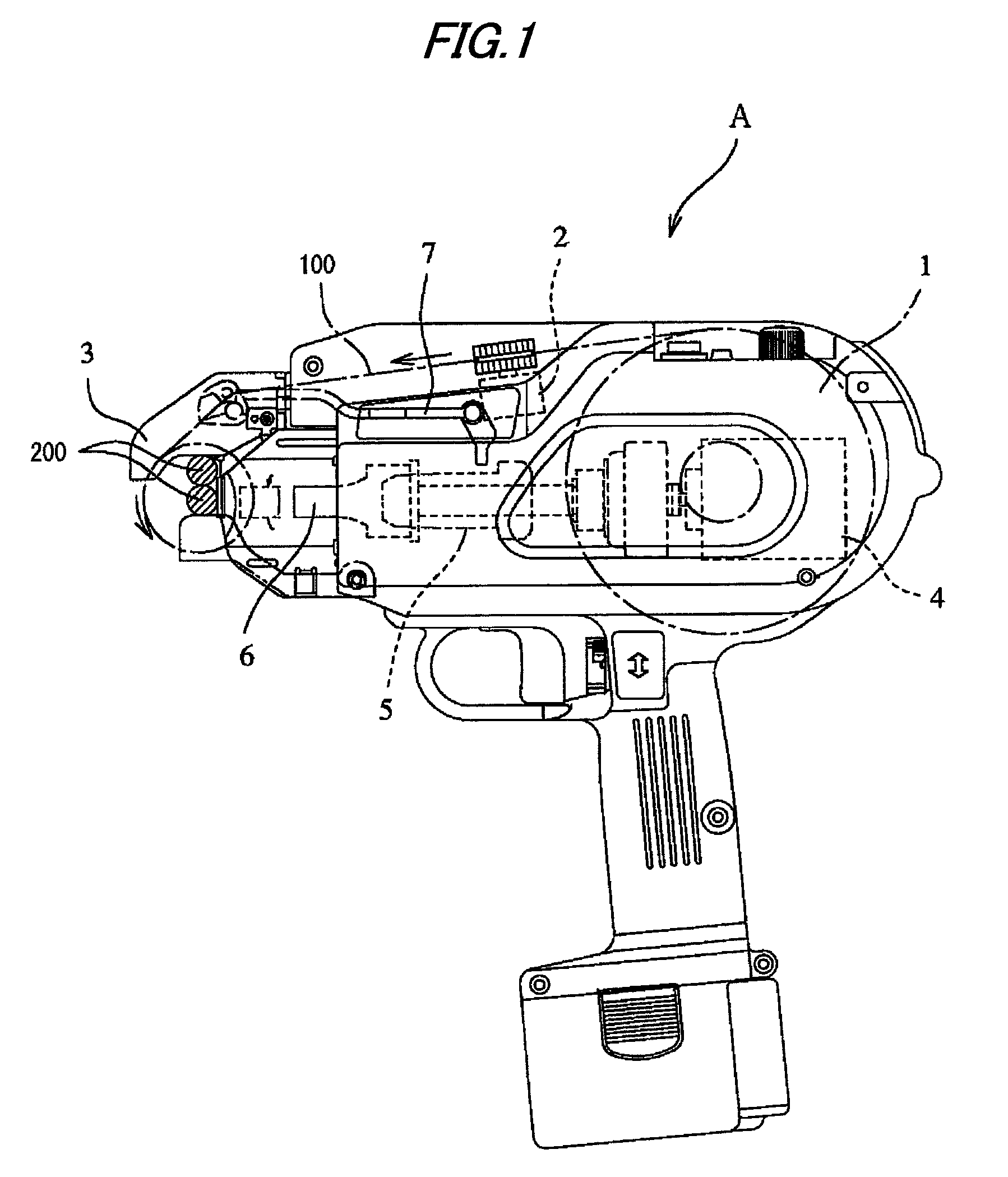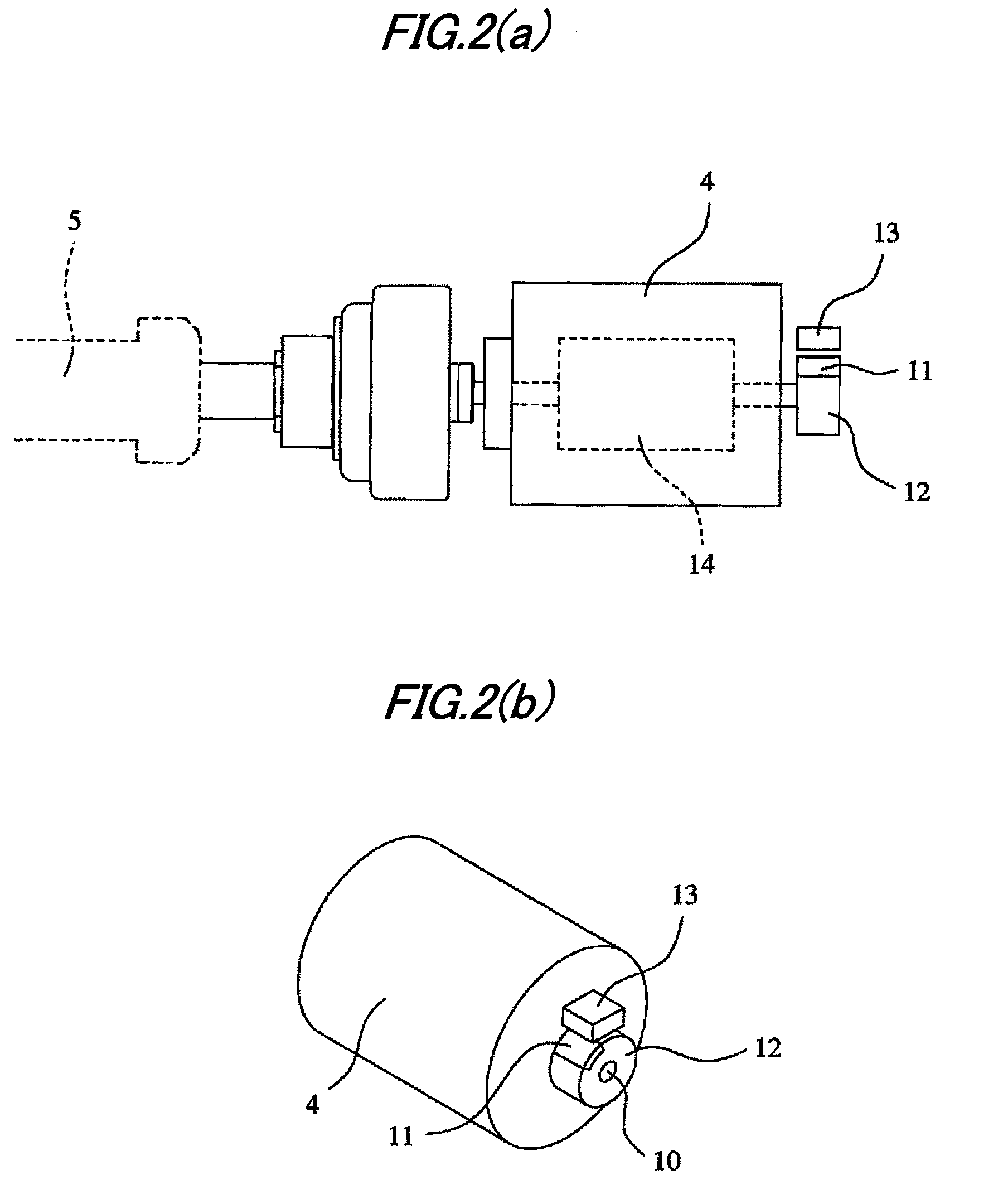Electric power tool
a technology of electric power tools and power tools, applied in the direction of electronic commutators, motor/generator/converter stoppers, dynamo-electric converter control, etc., can solve the problems of large error, needing to be exchanged, spark generation, etc., and achieve the effect of free from maintenance load
- Summary
- Abstract
- Description
- Claims
- Application Information
AI Technical Summary
Benefits of technology
Problems solved by technology
Method used
Image
Examples
Embodiment Construction
[0042]FIG. 1 shows an electric power tool “A” in an embodiment according to the invention. In the following description, a case where the invention is applied to a reinforcing bar binding machine for binding reinforcing bars will be described, as a exemplary embodiment of the invention. In this reinforcing bar binding machine “A”, a wire 100 is fed from a cartridge 1 to a guide arm 3 by a feed motor 2. After the wire 100 has been wound around reinforcing bars 200, a twisting motor 4 is rotated to bind the reinforcing bars with the wire 100. The feed motor 2 is rotated in a normal direction thereby to wind the wire 100 around the reinforcing bars. Then, the twisting motor 4 is rotated in the normal direction to move a sleeve (a work part) 5 forward by sliding, and a hook 6 provided at a distal end of the sleeve 5 clamps the wire 100. Thereafter, the feed motor 2 is rotated in a reverse direction to remove slack of the wire 100. Then, the twisting motor 4 is rotated again in the norma...
PUM
 Login to View More
Login to View More Abstract
Description
Claims
Application Information
 Login to View More
Login to View More - R&D
- Intellectual Property
- Life Sciences
- Materials
- Tech Scout
- Unparalleled Data Quality
- Higher Quality Content
- 60% Fewer Hallucinations
Browse by: Latest US Patents, China's latest patents, Technical Efficacy Thesaurus, Application Domain, Technology Topic, Popular Technical Reports.
© 2025 PatSnap. All rights reserved.Legal|Privacy policy|Modern Slavery Act Transparency Statement|Sitemap|About US| Contact US: help@patsnap.com



